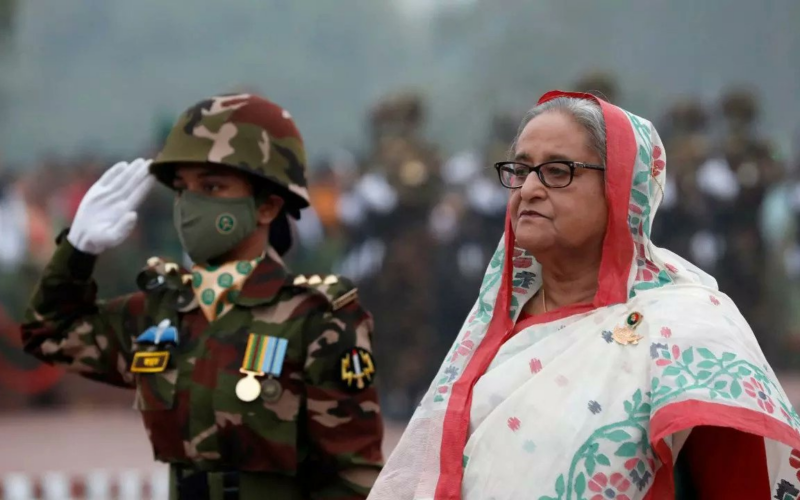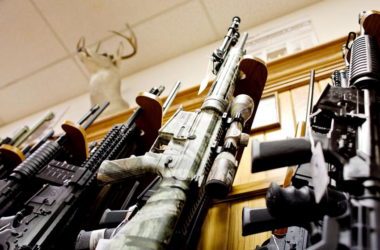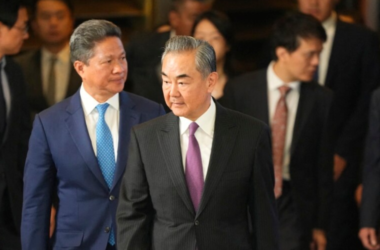In a dramatic turn of events, Bangladesh’s Prime Minister Sheikh Hasina fled her palace on Monday as tens of thousands of protesters demanding her resignation flooded the streets of Dhaka. The protesters, waving flags and celebrating jubilantly, were seen dancing on top of a tank as reports emerged that Hasina had left the capital for a “safer place,” according to a source close to the embattled leader.
Amidst growing unrest, Hasina’s son, Sajeeb Wazed Joy, urged the country’s security forces to prevent any power takeover from his mother’s rule. Meanwhile, a senior advisor suggested to AFP that Hasina’s resignation was becoming a “possibility.”
“She wanted to record a speech, but she could not get an opportunity to do that,” the source close to Hasina disclosed.
Adding to the tension, Bangladesh’s army chief, Waker-Uz-Zaman, is expected to address the nation later in the day. A military spokesperson provided no additional details but confirmed the upcoming statement. On Saturday, Waker reminded officers that the military “always stood by the people,” a message that has only fueled speculation about the military’s stance amid the escalating crisis.
The protests, which began last month over civil service job quotas, have morphed into broader demands for Hasina’s departure, marking some of the most intense unrest in her 15 years of rule. Demonstrators on Monday defied security forces, ignoring a curfew and marching through Dhaka after a weekend of deadly violence that claimed at least 94 lives, including 14 police officers.
The unrest has led to a virtual shutdown in the capital, with internet access restricted, offices closed, and over 3,500 garment factories—the backbone of Bangladesh’s economy—shuttered. Despite attempts by security forces to barricade routes to Hasina’s office with barbed wire and armored vehicles, vast crowds have torn down barriers and taken to the streets. The Business Standard newspaper estimated the crowd size at around 400,000, though the figure remains unverified.
Asif Mahmud, a key leader of the civil disobedience campaign, declared, “The time has come for the final protest,” as the movement reached a critical juncture.
Sunday’s violence, the deadliest since the protests began in early July, saw clashes between protesters and government supporters, with security forces opening fire in several instances. The overall death toll from the unrest now stands at over 300, according to an AFP tally based on reports from police, government officials, and hospital sources.
The United Nations has expressed alarm at the situation, with rights chief Volker Turk calling for an immediate end to the “shocking violence” in Bangladesh. Analysts have noted the unprecedented nature of the uprising, with Ali Riaz, a politics professor and Bangladesh expert, describing it as “unmatched in history.”
As the crisis deepens, the protests have taken on symbolic significance, with videos circulating on social media showing demonstrators vandalizing a statue of Hasina’s father, Sheikh Mujibur Rahman, the country’s revered independence leader.
In a sign of growing opposition to Hasina’s rule, even within military ranks, a respected former army chief called for the immediate withdrawal of troops from the streets to allow protests to continue. “Those who are responsible for pushing people of this country to a state of such extreme misery will have to be brought to justice,” ex-army chief General Ikbal Karim Bhuiyan said on Sunday.
The anti-government movement has gained momentum across Bangladesh, drawing support from diverse segments of society, including film stars, musicians, and singers. Hasina, who has ruled Bangladesh since 2009 and won her fourth consecutive election in January in a vote criticized for lacking genuine opposition, faces mounting pressure to step down. Rights groups have long accused her government of using state institutions to entrench its power and silence dissent through tactics including the extrajudicial killing of opposition activists.
What began as protests against the reintroduction of a controversial quota system for government jobs has evolved into a nationwide call for change, even as the scheme was partially scaled back by Bangladesh’s top court. As the situation in Dhaka and across Bangladesh continues to escalate, the country stands at a crossroads, with the future of Hasina’s government hanging in the balance.








